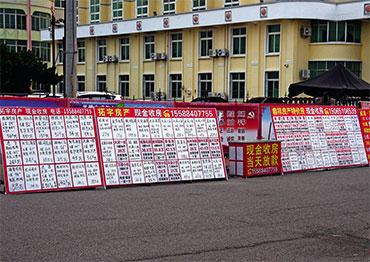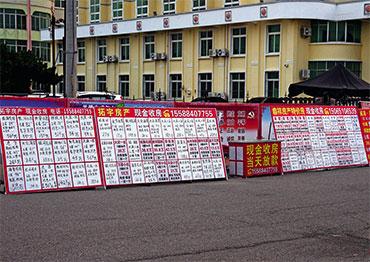The situation in Rushan is an epitome of the smaller cities along China’s coast.
“Nowadays when night falls, these large residential projects turn into dark buildings,” said Gu Jun, a sociology professor at Shanghai University. “They have become nothing but ghost cities.” He added that excessive coastal development is damaging precious natural resources.
Insiders say that it is still too early to develop China’s coastline resources as there is neither an overarching plan nor the industry or healthy economic chains necessary to sustain sound development.
The government official told our reporter that real estate development in Rushan began en masse in 2004. Within a few years, the coastline was crammed with construction projects. In 2007 and 2008, 60 percent of city revenue came from real estate development.
“We started real estate projects relatively early, and nearby cities developed after us. We have given other cities a salutary lesson in terms of urban planning,” he said.
Guo Songhai, director of the Real Estate Institute at Shandong University of Finance and Economics, delivered several proposals to the Chinese People’s Political Consultative Conference of Shandong Province over the years, appealing for more oversight of coastal real estate development. Surveying coastal cities in the province, his team found commercial projects at nearly every sea-adjacent site. Many sprawl over more than 10 square kilometers.
To make matters worse, since 2010 some cities started reclaiming land from the sea in the name of developing the maritime economy, a national strategy first proposed by the central government in 2010. According to Xinhua News Agency, many coastal cities in the provinces of Hainan, Guangdong, Shandong and Liaoning built residential projects on reclaimed land. Guo Songhai added that land reclamation in Dalian, Liaoning Province, has destroyed parts of the area’s Qianshan Mountains and coastal wetlands.
Li Wenjun, former director of the maritime management office at the State Oceanic Administration, said the construction frenzy was driven by the promise of huge profits. He added that reclaimed land is zoned as “newly added land,” whose legal status is unclear. Local governments made fortunes from issuing land use transfers to real estate developers.
Central and local governments have published regulations to rein in excessive land reclamation and real estate projects on coastlines. On November 1, 2016, China released the Measures on the Protection and Use of Coastline, a guideline which promised closer scrutiny of real estate projects and that they would be held to stringent environmental protection standards.
Dong Yue, deputy director of the Law School of the Ocean University of China in Qingdao, Shandong Province, told NewsChina that after the release of the document, some coastal cities launched rectification campaigns targeting seaside residential projects.
Sun Yingning told our reporter that while seaside apartments are popular with middle-aged and elderly buyers, they appeal less to younger ones due to the lack of industry in the area. “Rushan government must urgently improve infrastructure and win more policy support to make residents settle there and boost consumption,” he said.

 Old Version
Old Version
